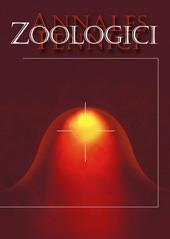During the first few weeks of life, chicks of the capercaillie (Tetrao urogallus) and black grouse (T. tetrix) subsist mainly on insects, of which lepidopteran and hymenopteran larvae are the main components. We studied the breeding phenology of these two species and examined how the timing of breeding was related to the temporal distribution of their larval food source. During a five-year survey, capercaillie mated and hatched consistently four to six days before black grouse. Depending on the vegetation type, the number of larvae (≥ 2 mm in length) increased between five and ten times within 10 days, and hatching coincided roughly with the peaks in larval numbers. Due to body growth, however, larval abundance in terms of volume was reached later and occurred 8–9 and 13–14 days after the mean hatching dates in the two species, respectively. Slightly later development of Hymenoptera as compared with that of Lepidoptera contributed in extending the period of high larval abundances for more than one week. The timing of breeding of the two species appears, therefore, to match the temporal distribution of insect food for the fast-growing chicks as they hatch several days before the peak in larval volumes. In one year, when mating was advanced, presumably due to exceptionally warm weather before mating (yet the temporal abundance of larvae was unchanged), breeding success was higher than in years when mating occurred later.
How to translate text using browser tools
1 August 2010
Does Timing of Breeding and Subsequent Hatching in Boreal Forest Grouse Match the Phenology of Insect Food for the Chicks?
Per Wegge,
Truls Vesterås,
Jørund Rolstad
ACCESS THE FULL ARTICLE

Annales Zoologici Fennici
Vol. 47 • No. 4
August 2010
Vol. 47 • No. 4
August 2010




